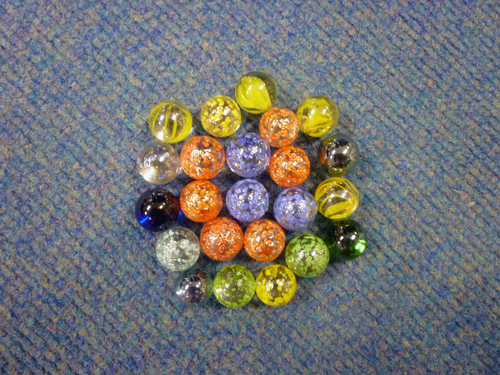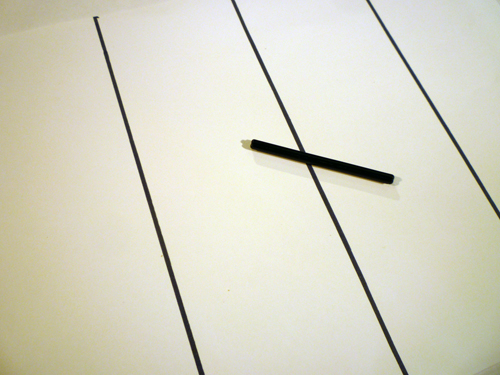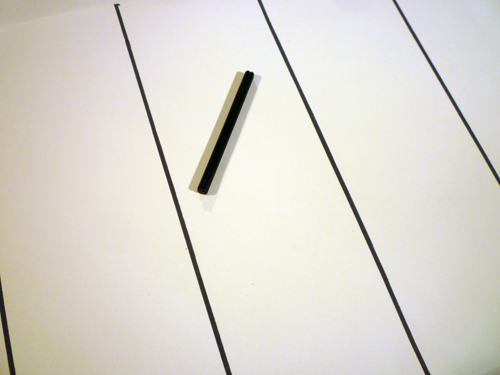Find Pi!
Pi is the ratio of the circumference of a circle to its diameter: 3.14159 to 5 decimal places and often written as ‘Л’. This ratio will always be the same number, no matter what circle you use to work it out. Pi is a very old number; the ancient Egyptians and the Babylonians knew of its existence even though they could not calculate it with the accuracy we can today.
Even though pi to a few decimal places is accurate enough most of the time mathematicians have pushed the limits of computing technology to calculate pi to over one trillion digits. But can we still calculate pi using ancient techniques?
During the Pi Day Live event, we asked the question: if everyone taking part tries techniques from the pre-computerised age and we then take an average of the results will we be able to derive pi to one, two, three or more, decimal places? Can we do better than the ancient Greeks or have we lost the ability to rediscover this amazing number without using computers and maybe even without calculators?
Pi Day Live is over but you can still take part. Try one of the techniques below and add your results to the 'What's your pi' form on the homepage.
Four ways to calculate pi
- Circles and pi [Level = easy]
- Marbles and pi [Level = easy/medium]
- Needles and pi [Level = medium]
- Rivers and pi [Level = pretty much impossible, but really interesting]
(If you wish, let us know how you get on via @OxUniConnect, oxfordconnect@conted.ox.ac.uk or our Facebook page.)
Top tip for teachers:
- Pick a method or methods that suit the ‘level’ of your pupils
- Why not challenge your class to put away their calculators if the method you choose involves maths that your pupils can manage with a little mental arithmetic?
Circles and pi [Level = easy]
Equipment
- 1 flat circular object, such as a plate, cup, or a CD
- 1 piece of string
- 1 ruler
How does it work?
Pi is defined as the ratio of the circumference of a circle to its diameter. So the most direct way to measure pi is to take anything that you can find that is circular and measure the circumference and divide it by the diameter.
Method
- Take your piece of string and wrap it around the widest part of your circular object.
- Mark the string at the point where it meets.
- Using your ruler, measure the length between the end of your string and the mark you made, and note this down. This is your object’s circumference.
- Now lay your ruler across the widest part of your object and measure the length of this.
- Make a note of the number you get; this is your object’s diameter.
- Take the object’s circumference (the bigger number) and divide it by its diameter.
Thinking further
How accurate is this? How truly circular are the things you are measuring? If you used a One Direction CD, will you have the guts to share this fact with the rest of us?
Read more about it…
- Pi, a Very Special Number, from the NRICH website
- Discovering the Magical Pi, from the Teacher Vision website
Marbles and pi [Level = easy/medium]
Equipment
- A bag of marbles
- A very flat surface
How does it work?
One of the first calculations of pi by the Egyptians was believed to have involved a method similar to the one we are using in this experiment. The area of a circle is pi times the radius squared. It should therefore be possible to calculate pi using some marbles and some simple division and multiplication.
Method
Make a solid circle out of the marbles. If your marbles start to roll, reconsider the flatness of your surface. Once you have a circle of marbles, do the following:
- Count the number of marbles from one side of the circle to the other. This is your D value.
- Count the number of marbles you used to create the whole of your circle. This is your v value.
Use these values to solve this equation to give you an approximation of pi:

You can use any number of marbles you think will work
Thinking further
- How close was your result to pi? How accurate is this technique? What would make it more accurate?
- Does using more marbles give you a more accurate result?
- Do you think this would work if your marbles were a bit dented or wonky?
Read more about it…
- On the Ancient Egyptian Value for pi, from The Number Warrior blog
- Amazing math methods, a video on YouTube by Momen Ahmed
Needles and pi [Level = medium]
Equipment
- A piece of paper, on which are drawn/printed lines that are 50mm apart
- A match with the head cut off, or something similar, which is less than 50mm long
- (Actually, as long as the distance between your lines is wider than the thing you are throwing the experiment works. We have suggested 50mm because it’s a handy size for a table-top activity.)
How does it work?
In this experiment we are going to try what is probably one of the most curious ways to calculate pi - Buffon’s needle problem. Buffon's needle problem, which is about 200 years old, asks this question: Suppose a needle is dropped on a floor, made of parallel strips of wood of equal width. What is the probability that the needle will lie across a line between two strips?
The solution, which assumes that the needle is shorter than the width of the strips, can be used to approximate pi.
If you can’t decide which experiment to choose, do this one because we are keen to gather as much data as possible to create the biggest Buffon needle experiment in history.
Method
Place your piece of paper on a flat surface and drop your match (or similar object) on to the paper, from a height of about 50mm. (The exact height isn’t important, just don’t go so close to the paper that you can affect where the match lands.) Drop the match and record whether it lands either not touching a line or touching/crossing a line. Do this 100 times. (If the match rolls off the paper, don’t count that turn.)
When you are done, do the following:
- Calculate the proportion of times the match crossed/touched a line. As you’ve dropped the match 100 times, this is pretty easy; if the match crossed/touched a line 42 times, the proportion is 0.42. (This assumes that you have thrown the match exactly 100 times). This figure is your p value.
- Note the spacing between the lines on your paper. This figure is your x value.
- Note the length of the match you used to drop on your paper. This is your L value.
Use these values to solve this equation:
 Crossing a line
|
 Not crossing a line
|
Thinking further
- When we tried this experiment, our result was 2.63. We used a cylindrical piece of Lego that was 60mm long and the spacing between the lines on our paper was 70mm. The person responsible for dropping the piece of Lego 100 times is not known for his steady hands.
- Our result demonstrates why we want as many people as possible to try this experiment. How close is your result to pi? How does your result compare with others who have the same line spacing as you but are using a different sized match? Will our combined results average to a figure that is close to pi?
- Can you scale the experiment up? What happens if you are throwing an object that is much bigger? (Remember, your stick must always be shorter than the space between your lines.)
- Does collecting more than a hundred results improve the accuracy of the activity?
Top tip for teachers:
It’s probably best for pupils to work in pairs with one throwing the match/object and another noting down the times it crosses a line or lands between lines.
Read more about it…
- Activity: Buffon’s Needle, from MathsIsFun.com
- Buffon’s Needle – An Analysis and Simulation by George Reese, Director of the Office of Math, Science and Technology Education, University of Illinois
Rivers and pi [Level = pretty much impossible, but really interesting]
Professor Hans-Henrik Stolum has made a fascinating discovery about the ratio between the actual length of rivers from source to mouth and the distance from source to mouth as the crow flies. It is approximately 3.14 and the mathematics behind this is explained in this blog post.
If you have access to a very large scale map of a river and a lot of patience you can, with the aid of a pencil, ball of string and a ruler, try to replicate a calculation made by an earth scientist with a fully equipped geo-physics lab.
Equipment
- 1 very large-scale map of an entire river, which runs from source to mouth
- 1 ball of string
- 1 ruler
- A beverage of your choice
Method
Use your string to measure the length of the river from source to mouth. Make a note of the distance. Drink your beverage if you think you’re about to lose patience. Now take your ruler and measure on the map the shortest distance between the river’s source and its mouth. Divide your string distance by your ruler distance. Feel smug that you gave this experiment a go.
Thinking further
When we tried this experiment, using the shortest river we could find on Google maps and the biggest printer in the building, our result was 1.45 (not great). How close was your result to pi? What are the limitations of using a map to replicate Stolum’s work?
Read more about it…
- River Meandering as a Self-Organization Process, Stolum’s paper in PDF format




